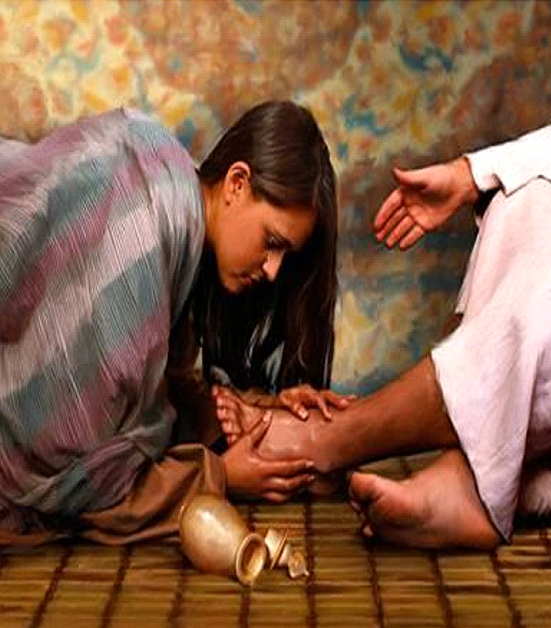
Canada has been home to two notable revivals in the past 100 years, the more recent being the Toronto Blessing, which started in January 1994, and a revival that hit North Battleford, Saskatchewan, in 1948.
The latter was much different from the other revivals in North America in the 20th century. First, the Azusa Street Revival provided the stage for today’s Pentecostal Movement, which started in 1906 in Los Angeles.
Toronto and Los Angeles were the most significant urban centers of their day, and many people were affected; however, North Battleford was different. It was situated in a little-known province in Canada. At the time, it was an obscure town in the northern part of that province, making it not easy to visit.
The 1948 revival occurred at Sharon Bible College, part of a more extensive ministry known as Sharon’s Orphanage, which has since been renamed Global Missions. The school began in an old World War II airport hangar. Approximately 70 students attended the Bible school, led by three men: George Hawtin and Percy Hunt, Pastors of the Pentecostal Assemblies, and Foursquare Gospel Pastor Herrick Holt.
On February 11, 1948, a young woman prophesied that God had opened a door for the students to walk through. A second prophecy stated that this door involved the Gifts of The Holy Spirit and Church Ministries including Apostles and Prophets (Ephesians 4:11-16).
The Holy Spirit fell with power, and meetings went on for hours and weeks despite its isolation; thousands attended the meetings, including a church camp held throughout 1948. Though Azusa Street and Toronto Blessing are certainly the more significant revivals, 1948 also had a big, perhaps more theological impact.
The practical teachings that came out of North Battleford are as follows:
The practical teachings that came out of North Battleford are as follows:
⦁ Restoration of the Church
⦁ The Latter Rain
⦁ The Restoration of Apostles and Prophets
⦁ The Restoration of the Tabernacle of David
I will discuss “The Restoration of the Tabernacle of David.”
“After these things I will return,
And I will rebuild the tabernacle of David which has fallen,
And I will rebuild its ruins,
And I will restore it,
17 So that the rest of mankind may seek the Lord,
And all the Gentiles who are called by My name,’
18 Says the Lord, who makes these things known from long ago.
(Acts 15:16-18 NASV)
When the Holy Spirit fell on the Gentiles, it caused quite a controversy in the early Jewish Synagogue. They called a meeting in Jerusalem to discuss what to do with the Gentile Believers.
To resolve the issue, Apostle James, Jesus’ half-brother, quoted Amos 9:11-12, which spoke of how God would restore David’s Tabernacle, which resulted in Gentiles pouring into Israel. Because of his quote from Amos, they believed God fulfilled this prophecy in the church, definitely linking Israel and the church as one.
Apostle James’s speech in Acts 15:13-21 was simple, straightforward, and concise. He validated Peter’s testimony that God was redeeming Gentiles and Jews. James recited Amos 9:11-12 to emphasize that rescuing the Gentiles did not conflict with what Scripture taught but was instead a fulfillment of it.
The New is in the Old contained,
The Old is in the New explained,
The New is in the Old concealed,
The Old is in the New revealed,
The New is in the Old enfolded
The Old is in the New unfolded!.
David’s Tabernacle also incorporated a new form of expressive praise and worship in Old Testament Israel, which included clapping hands (Psalm 47:1), lifting hands (Psalm 134), and shouting (Psalm 47:1, 5).
With David’s Tabernacle restored, the church willingly adopted the Tabernacle’s praise and worship style.

The Davidic Praise and Worship movement explicitly fulfills Dr. E. Charlotte Baker’s statement in the introduction of her book, “On Eagles’ Wings”:
“There is a very deep cry arising from the hearts of God’s hungry people the world over, a cry to ‘know Him.’ Worship in its many facets and levels, I believe, is the answer to this cry. She further relates the following:
“John 4:23 declares ‘But the hour cometh, and now is, when the true worshippers shall worship the Father in spirit and in truth: For the Father seeketh such to worship him.”’
In conclusion, I contend that when believers in the Body of Christ incorporate Davidic Praise and Worship, we pour our love and adoration on Our Lord and Savior, Jesus Christ, like the woman poured out the oil on His feet from her Alabaster Box. Oh, what a sweet aroma our praise and worship are to Him!

©2020 Rejoice Always
Call Us at (910) 775-2009